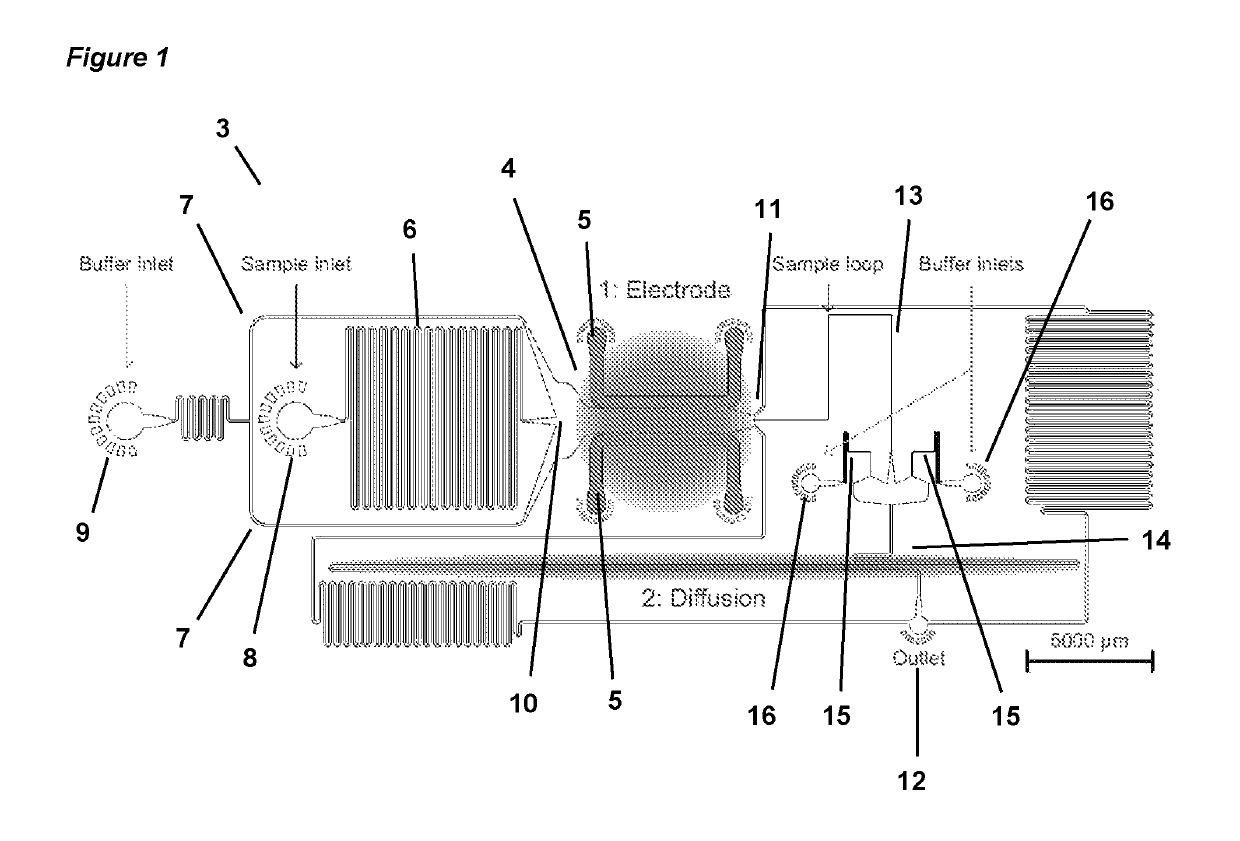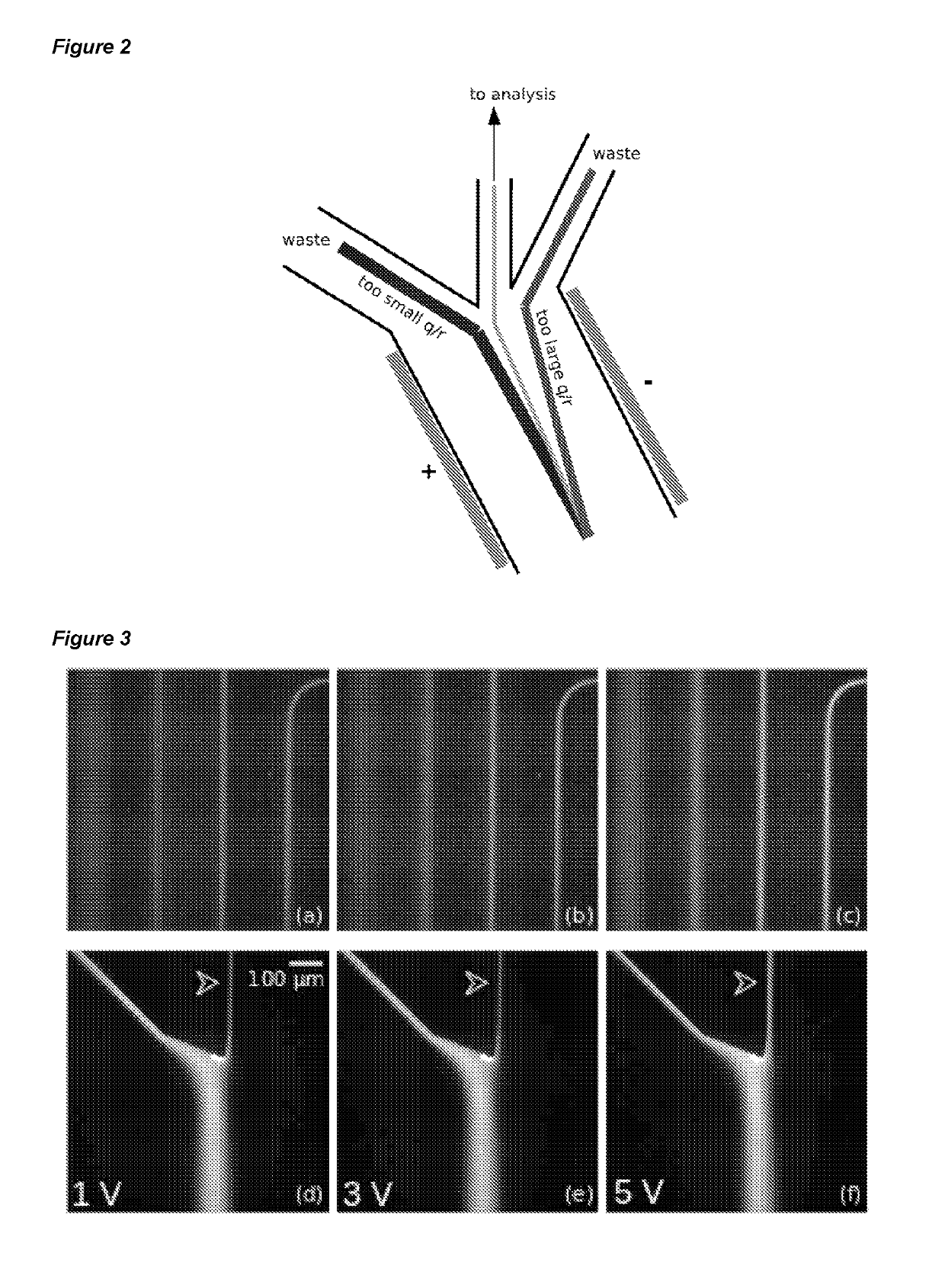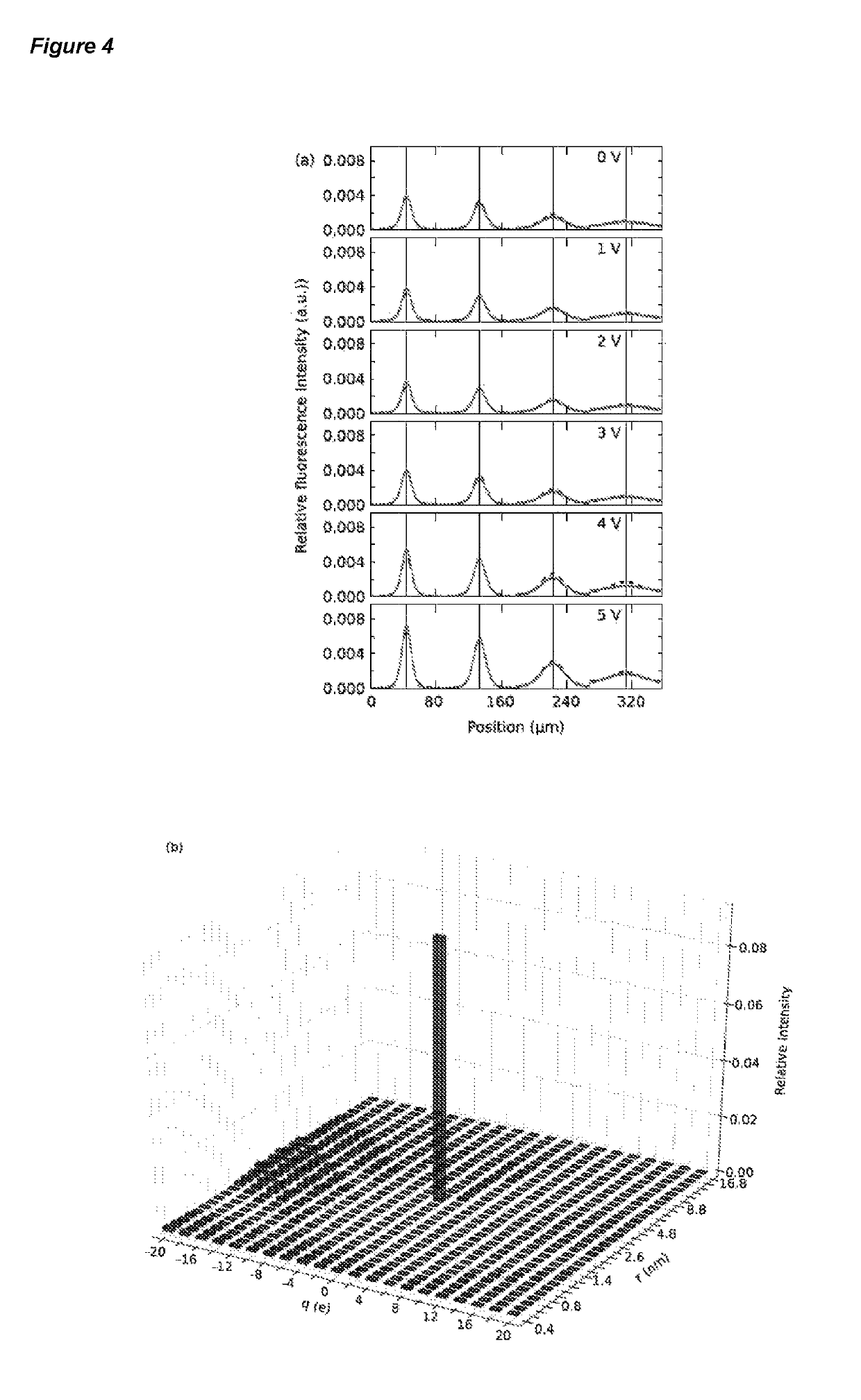Fluidic analysis and separation
a technology of fluidic analysis and separation, applied in the field of flow methods, can solve the problems of insufficient lack of quantitative information on the properties of analytes, and inability to do 2d gel electrophoresis or mass spectrometry,
- Summary
- Abstract
- Description
- Claims
- Application Information
AI Technical Summary
Benefits of technology
Problems solved by technology
Method used
Image
Examples
Embodiment Construction
[0052]The present invention provides methods and apparatus for analysing a component in a fluid, including a component in a multicomponent mixture.
[0053]The method of the present case provides an alternative approach for the analysis of complex mixtures by a modular fluidic strategy relying on laminar flow. Namely, a solution is preseparated under steady-state conditions according to physical properties before its contents are identified by means of another quantity through global analysis. In the present case the method is exemplified by the separation of analytes with respect to their size-over-charge ratios through microfluidic free-flow electrophoresis before subsequent separation by size via diffusion spectrometry.
[0054]As the methods of the invention typically occur under steady state, several separative modules can be added in series to multiplicatively increase the resolution of this technique, and different detection modules may be used.
[0055]The present inventors have prev...
PUM
| Property | Measurement | Unit |
|---|---|---|
| hydrodynamic radius | aaaaa | aaaaa |
| hydrodynamic radius | aaaaa | aaaaa |
| concentration | aaaaa | aaaaa |
Abstract
Description
Claims
Application Information
 Login to view more
Login to view more - R&D Engineer
- R&D Manager
- IP Professional
- Industry Leading Data Capabilities
- Powerful AI technology
- Patent DNA Extraction
Browse by: Latest US Patents, China's latest patents, Technical Efficacy Thesaurus, Application Domain, Technology Topic.
© 2024 PatSnap. All rights reserved.Legal|Privacy policy|Modern Slavery Act Transparency Statement|Sitemap



